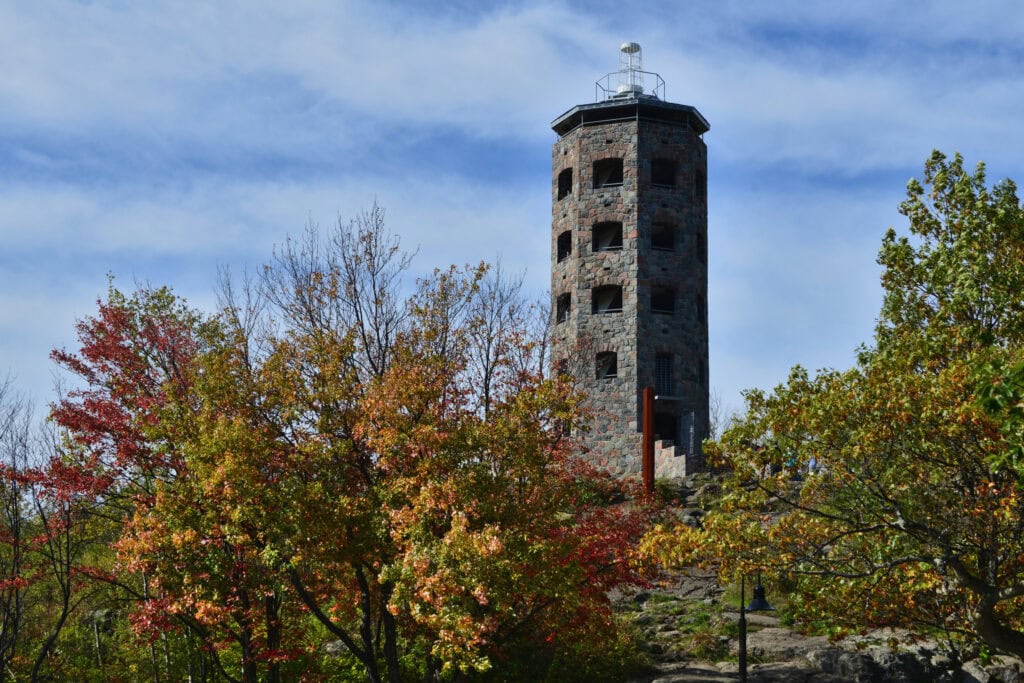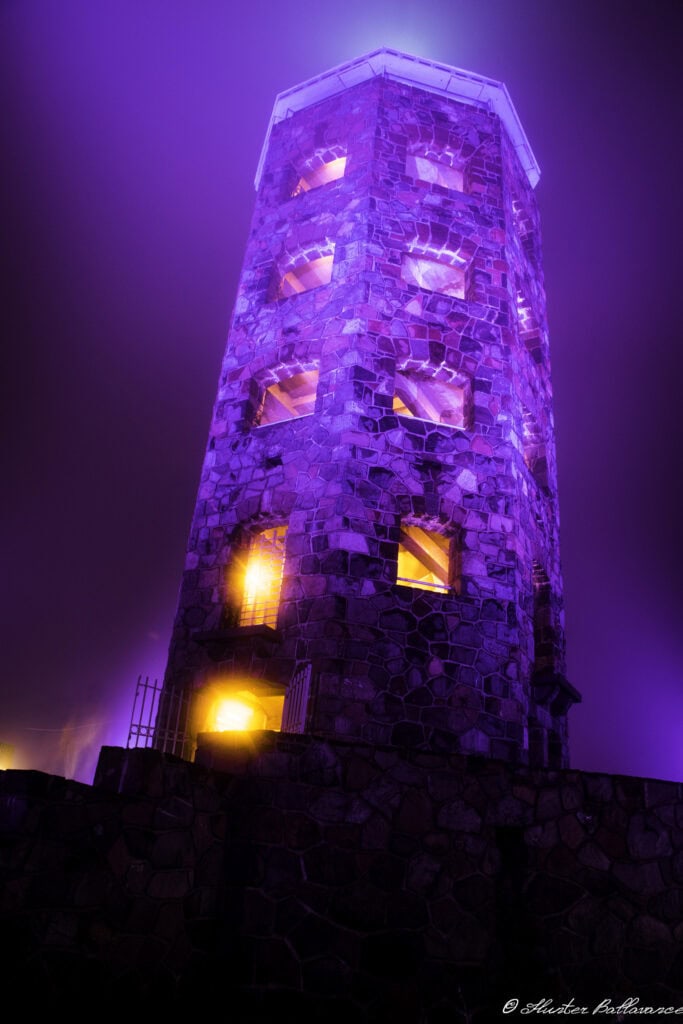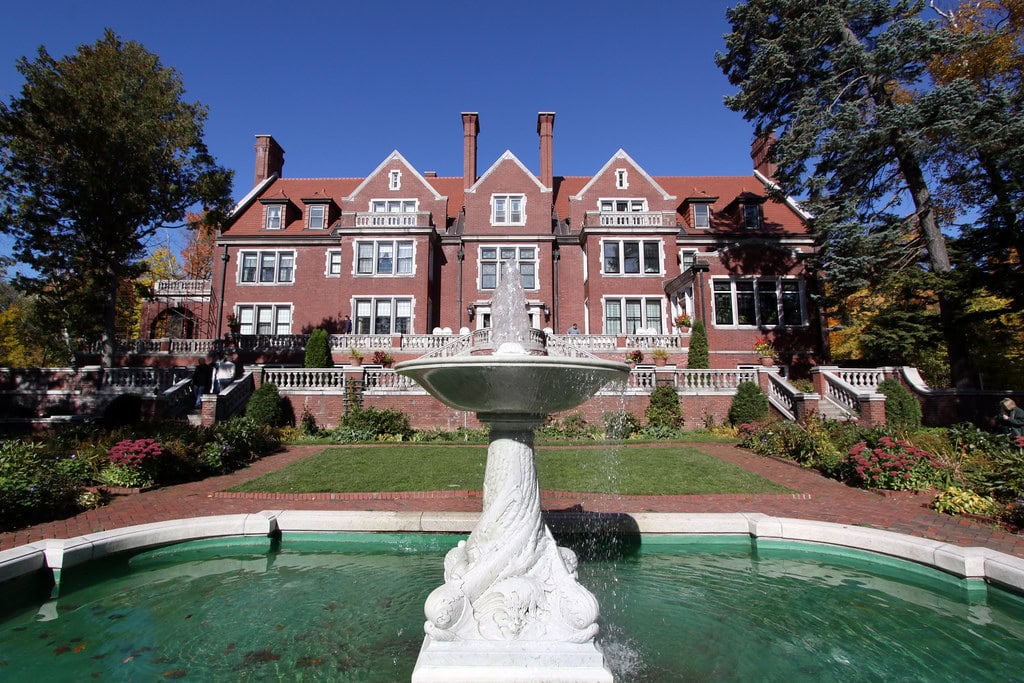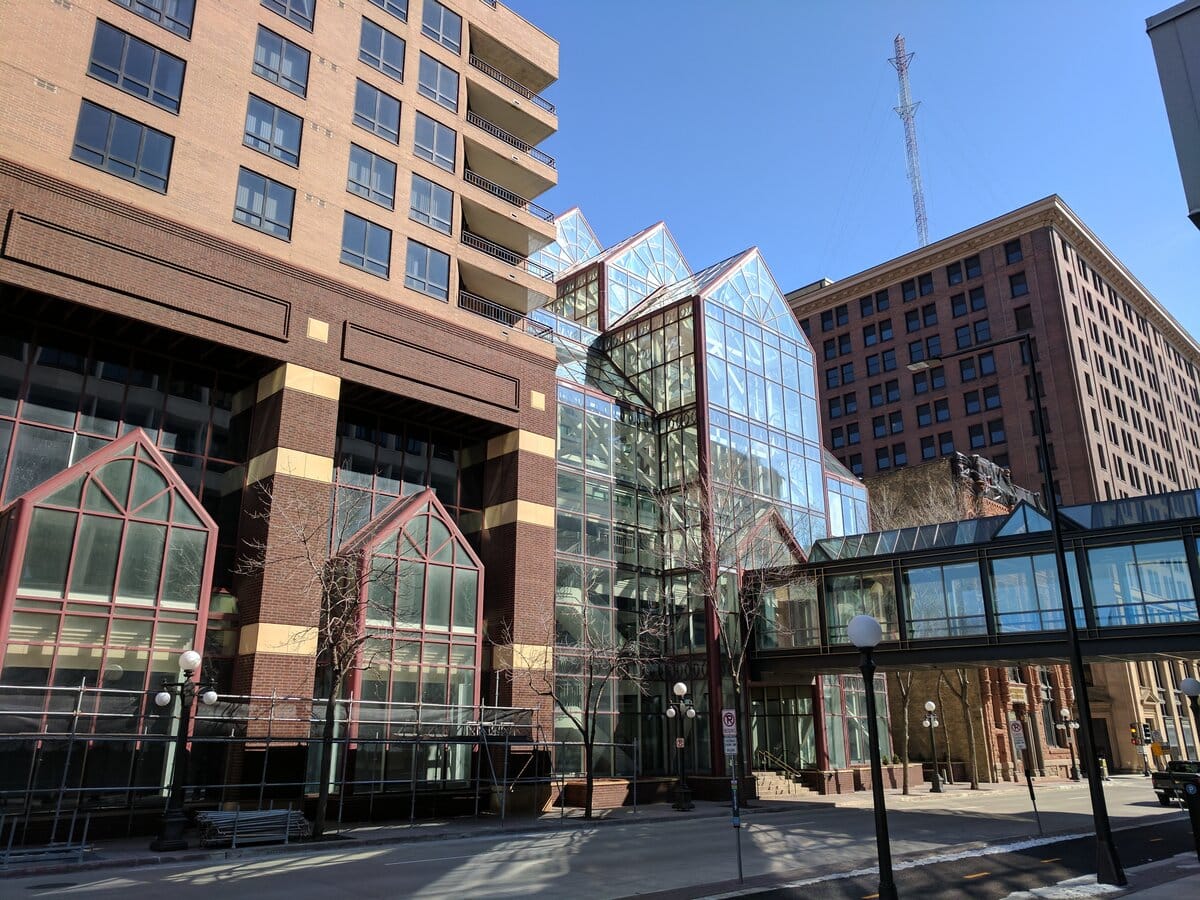Stone, Sky, and the Quiet Updraft of Time
Enger Tower starts at ground level with stone thick enough to hold the air still. From there, the stairs curve upward, past window arches with metal bars where balconies used to be.
The tower stands 80 feet tall, set on a hill carved from Enger's estate, looking out over the Twin Ports. Its top beacon throws a green pulse visible for miles, though most people come for the view at eye level.
A one-way traffic loop installed in May 2025 made that climb quieter, with fewer cars and more walkers, and provided better space to pause.
The fifth floor draws the most attention, not for the scenery, but for what some say they see through the window. Enger Tower doesn't speak. It holds shape. And sometimes, people swear it holds more than that.
Bricks, Bequests, and Enger Tower That Stayed
Bert Enger started in Pine City, selling furniture from a store that didn't last.
He moved north, set up shop in Duluth, and by the time he died in 1931, he'd built enough of a name to leave the city one of its largest land gifts: Enger Hill.
The tower came later, planned as a tribute and paid for through that bequest.
The land also included what would become Enger Park and Enger Golf Course.
Construction finished in time for a royal visit.
On June 15, 1939, Crown Prince Olav and Crown Princess Märtha of Norway arrived to dedicate the new structure.
The timing wasn't ceremonial filler; it tied the Enger Tower directly to the city's immigrant heritage and to the man whose name it carried.
At the time, five stone levels with open arches didn't seem especially rare, but locals climbed it anyway.
There was no rush to commercialize the space. No entrance fee, no vendors, no banners. The gift had already been made.
And the crown prince standing beside it gave the moment weight without anyone needing to say it out loud.
Enger Tower, park, hill. All of it folded into one inheritance that stayed put.
Stonework and the Wind That Moves Through
The shape of Enger Tower hasn't changed since 1939, but what surrounds it has.
Its walls still rise in five stacked segments, cut from stone that holds steady in wind and frost.
Inside, one staircase wraps upward, narrow and unlit.
Visitors climb through echoing landings with no handrails, just stone and air, and nothing to do but keep walking.
Originally, the second floor had small balconies that pushed out through archways.
Those didn't last. Exposure cracked their bases, and by the time they were removed, the openings had rusted along the corners.
Now, metal bars cross the void where they used to be.
The green beacon at the top went up later, mounted high enough to throw a pulse visible for miles.
Rotary Club project added programmable LED lighting.
It's the same tower, but the lights shift it slightly, not in structure, just in how it feels to stand below it when the sky dims and the stone starts to glow.

Royal Paving and Civic Repair
In October 2011, a royal visit once again circled back to the Enger Tower.
This time it was King Harald V and Queen Sonja of Norway, arriving to rededicate a structure first opened by his parents in 1939.
Duluth had just completed a renovation project that brought new mortar to the stone, cleared paths, and cleaned up years of wear.
It wasn't a rebuild. The shape stayed the same, but the edges looked sharper, the lines held straighter, and the old arches let in more light.
Ceremony followed a familiar script, flags, a few speeches, and a soft civic pageantry rarely seen in city park work.
The king's presence framed it all without crowding the space.
Most locals who came stood back by the gardens, close enough to hear but far from the cameras.
That year marked the first major update to the site since its dedication.
Interpretive signs were added, walkways regraded, and garden beds replanted near the approach.
But the tower itself didn't shift.
The Loop That Changed the Climb
May 2025 brought a change that didn't come from stone or speeches.
Skyline Parkway, long a winding stretch past Enger Hill, shifted to a one-way loop near the Enger Tower.
The city reworked the flow between Hank Jensen Drive and the overlook parking lot.
What used to be a jumbled turn with bad visibility became a smoother arc with fewer close calls.
The new design included wider paths for pedestrians and cyclists, a three-way stop at the critical junction, and several pull-off spots meant for people who just wanted to pause without blocking traffic.
The project wasn't flashy, but for people trying to find the tower on a busy day, it took the edge off.
Trail access improved as part of the rework, too.
Nearby routes were cleared and signed, making the tower part of a larger walking loop rather than a single out-and-back.
The goal wasn't expansion, just better use of what was already there.

Fifth Floor, No One There
People talk about the fifth level more than the others.
The pattern's always the same: someone on the ground spots a figure through the open window, standing motionless near the ledge.
By the time they reach the top, there's no one there. No footsteps, no voices, just wind moving through stone.
That story has circulated for years, showing up in TikTok captions, Reddit threads, and haunted landmark blogs.
There's no verified list of accidents tied to the tower, and no city record confirming any incident.
But the sightings keep stacking, always quiet, always vague, always on the upper floor.
One report described hearing low voices while climbing, as if two people were murmuring just ahead.
Another set of footsteps was heard close behind, but they faded as soon as the climber paused.
There's nothing staged about it. No lights flicker, no props are set up. The tower isn't maintained as a tourist fright.
Visitors post photos of the arches and the stairwell, but no image has captured the figure.
The details never change: someone watching, someone gone.
And for whatever reason, it's almost always seen from the ground, at a distance, framed by stone, too far away to call out.
When the Lights Take Over
In 2011, the Enger Tower lit up red. The color marked Go Red for Women Day, part of a national campaign for heart health.
The light came from programmable LEDs installed by the Rotary Club of Duluth earlier that year.
A few weeks later, the same lights glowed in a rainbow during Duluth-Superior Pride.
The system allows the city to shift the tower's appearance without changing anything physically.
It doesn't blink or pulse. It holds the color, static, washed across the stone, filling each of the five levels from the ground to the beacon.
Photos spread quickly online. Some came from the bluff trail, others from across the harbor.
They all showed the tower centered in frame, lit up against a low sky.
The structure doesn't host events or speeches during these displays. No crowds gather. It's all visual.
Alongside the lighting upgrade, a new Rotary Peace Plaza was completed near the base.
The space holds benches, small signage, and clear lines of sight toward the tower.
Nothing about it interrupts the climb. You could miss the plaza if you parked too close or walked too fast.
But once the lights hit the stone, there's no missing the tower.
🍀





